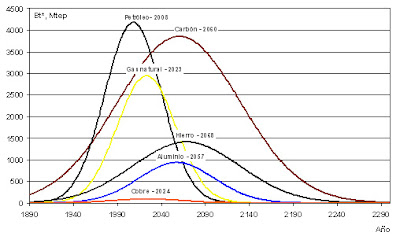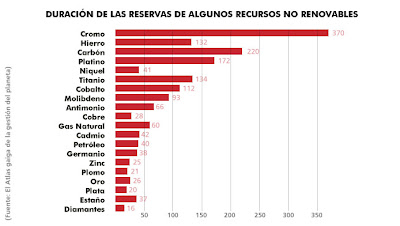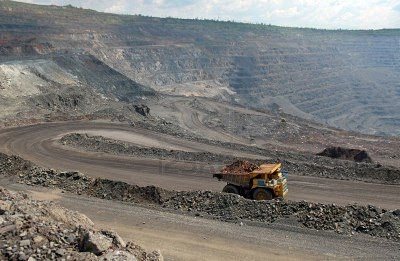In 2008, chemical engineer Alicia Valero studied the mineral capital of the Earth for her doctoral thesis conducted at the Research Centre for Renewable Energy (CIRCE) at the University of Zaragoza. Her studies on the depletion of mineral reserves were published in summary form in an award-winning article by the International Scientific Committee of the 5th Conference on Sustainable Development in Energy, Water and Environment held in Dubrovnik, Croatia. A. Valero asserts that during the 21st century, we will deplete the most important mineral reserves on the planet unless the recycling of metals and other strategic minerals is rigorously promoted, and the mineral capital of the Earth is managed transparently.
In reality, materials do not disappear when used. For example, the aluminum from a can does not disappear when it becomes waste. There is no scarcity of materials, but rather a scarcity of concentrated materials. A mine is a very rare occurrence in the vastness of the Earth’s crust (a geochemical anomaly). By extracting materials, their concentration decreases, and the energy required to extract the next ton increases exponentially, as does the associated environmental impact. The same is true when dispersing materials in the form of waste, which can be solved by placing all the cans from the example, as we already mentioned in the recycling article.
According to the author’s estimates, 92% of mercury reserves, 79% of silver, 75% of gold, and 75% of arsenic would already be depleted. As for the most used minerals, the depletion rate of iron would be 28% and that of aluminum 15%, while that of copper would exceed 50%.

With aluminum, iron, and copper, the chemical engineer also applied the Hubbert model to estimate, as has been done with oil and other energy minerals, when the peak of production would be reached, from which it would begin to decline.
The result she found is that, while this peak would have already been reached by oil in 2008 and would arrive for natural gas in 2023 and for coal in 2060, in the case of copper this would occur in 2024, in the case of aluminum in 2057, and in the case of iron in 2068.

At current rates of raw material consumption, even if twice the amount of what is known today as exploitable resources on Earth were discovered, consumption peaks would only shift by about thirty years on average. Although the problem may shift one or two generations, that is nothing even on the human timescale.
Additionally, the global demand for rare earths for microelectronics, phosphates for agriculture, metals for infrastructure construction, etc. is growing exponentially. Furthermore, the scale of the demands clashes with that of technological supply. For example, there is not enough platinum or rare earths to store the hydrogen that would move a possible society based on it, nor enough lithium to store a small part of all the electrical energy consumed worldwide today. Turning bare rock into an immense mine will always be technologically possible, but the economic, energy, and environmental costs make it and will make it unfeasible. Removing forests, mountains, oceans, and landscapes to search for the last tons of strategic minerals, as is done today with gold, diamonds, or coltan, is not the best planetary future that should await us.
In conclusion, the author emphasizes the need for global institutions that provide transparency and promote the rational management of planetary mineral resources. The study highlights the importance of recycling and a global awareness among all the citizens of the planet about the need to address the environmental problem in a responsible manner, with a commitment to reduce the energy and material consumption of society.
